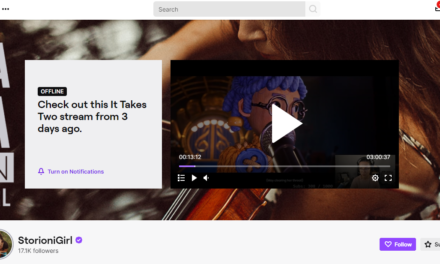Omnichannel content—if you can accurately define it, you’re probably a step ahead of the next guy. Even the experts, such as Apoorv Durga, founder of AltView Advisory, say omnichannel is “tough to define directly.” If you ask Wikipedia, that all-knowing database, omnichannel content means that “rather than working in parallel, communication channels and their supporting resources are designed and orchestrated to cooperate.”
“The term ‘omnichannel’ really refers to the ability to have a seamless, integrated, uniform, and unified strategy across multiple channels,” Durga says. Those channels, though, are proliferating. It’s not just the number of devices that complicates things, but the applications and platforms available on those devices and an increasing number of physical and digital touchpoints.
But don’t mistake omnichannel for multichannel. “Omnichannel content is the creation, management, and delivery of content to multiple marketing channels in a cohesive, customer-centric way. It is a step up in comparison to multichannel content—the practice that is primarily concerned with the ability to publish information to different channels in different formats,” says Marianne Kay, a digital strategist and a WCM expert. “Multichannel content gets the information to the customer, but each channel is treated in its own right, and content delivery for each channel is implemented by its own team.”
It’s no longer sufficient to simply be on a multitude of channels—you have to think about them comprehensively. “Multichannel content fails to fully appreciate customer journeys that cut across the channels,” says Kay. “A customer that interacts with the company, both online and by phone, can get mixed messages from different teams that are servicing these channels. Omnichannel content is meant to fix that—it starts with the customer and provides an integrated, seamless experience across multiple devices and touchpoints.”
Omnichannel is meant to provide cohesive experiences across any and all channels that your customers may be on. “To be able to deliver these experiences, you need to be able to have an omnichannel content strategy that goes beyond repurposing content for different screen sizes,” Durga adds. “It also includes adaptive content strategies, multichannel publishing strategies, better abilities to personalize and target content across channels, ability to integrate customer profiles across interactions, capacity to define cross-channel journeys, and finally, the ability to measure and analyze.”
In other words, omnichannel content is already complex and shows no signs of slowing down. But technology is making it easier to achieve the goals set forth by your omnichannel strategy.
The Omnichannel Content Year in Review
Like so many other corners of the digital content industry, omnichannel content was impacted by the AI and machine learning (ML) revolution in 2018. Omnichannel is often used in the contexts of retail, marketing, and customer service. But it’s gotten a boost thanks to advances in technology that can help automate the experience. “Omnichannel isn’t really new. However, due to increased popularity of AI and machine learning, content personalization is seeing a rapid evolution from mostly rules-based personalization to ML-based personalization,” says Durga. “Artificial intelligence and machine learning techniques have evolved, and it is now much easier than ever to use these to implement personalization. This is likely to remain an interesting area to track in 2019 as well.”
AI and ML aren’t the only technologies helping to advance the cause of omnichannel content. “Headless CMSs such as GatherContent, Contentful, and Prismic are channel-agnostic content repository platforms that allow content publishing through an API,” says Kay. “Headless CMSs allow organizations to separate content from presentation on a new level that wasn’t possible 5 years ago. This type of architecture supports an omnichannel content approach, but it assumes well-structured content and well-defined content management processes—something that continues to be aspirational for many large organizations.”
As the tools have advanced, new industries—even traditionally risk-averse ones—are trying out new channels. Kay saw one sector in particular really embrace new channels. “Mobile banking apps became more established as valid, secure, and fast ways to make everyday transactions,” she says. But it’s not just banking that is improving its omnichannel game. Kay adds, “Consistency in branding across different channels is improving across all industries.”
A Look Ahead at Omnichannel Content
We can expect to see AI and ML continue to shape what’s possible on the omnichannel front in the coming year, but that’s not where the advancements end. “A marketing technology area that will be trending is this whole new marketplace called customer data platforms (CDPs),” says Durga. “One of the key drivers of an omnichannel strategy is the ability to create a 360-degree profile of users based on their interactions across multiple platforms. CDPs enable you to do that and will increasingly be on customer shortlists.”
Additionally, Durga says, another increasingly familiar technology will figure prominently in the channels of 2019. “Robotic process automation (RPA) and associated technologies like chatbots will also be trending. Both these areas—RPA and chatbots—have seen tremendous technology advancements and are useful tools for automating business process, which is an important aspect for delivering omnichannel experiences.”
But with new tools and channels making more and more possible, Kay warns that companies need to take a step back. “Organizations need to be clever with user data and carefully select customer journeys that matter,” she says. “With so many platforms, devices, and audiences to cater for, it is easy to lose track of which customer needs are truly important to the company’s success.”
So if you’re just starting to think about your omnichannel strategy, where should you begin? Kay says one channel—that seems almost quaint at this point—still matters: “Mobile experience is increasingly critical to the successful customer journey; 82% of smartphone users say they use their phones on purchases they’re about to make in-store, and mobile shopping now accounts for over 50% of online transactions. Interfaces and functionality that was considered mobile-friendly 5 years ago will require additional modernization to cope with the increasing customer expectations.”






